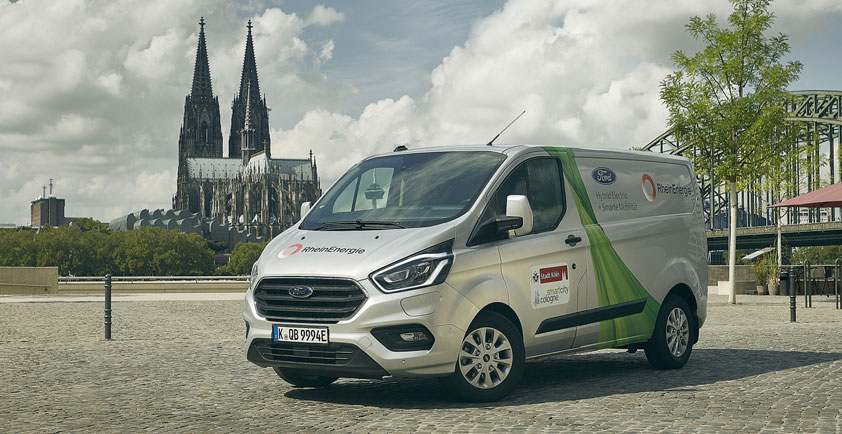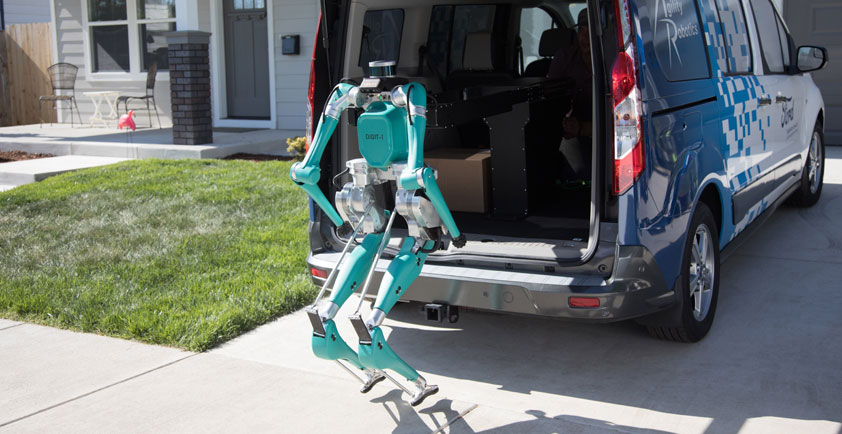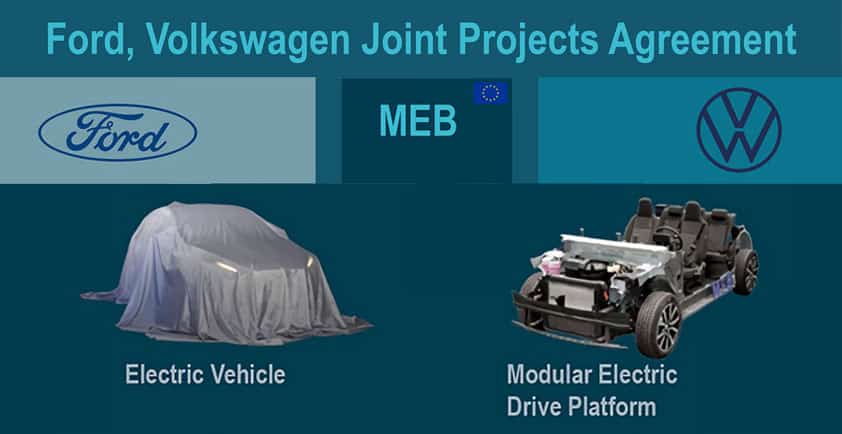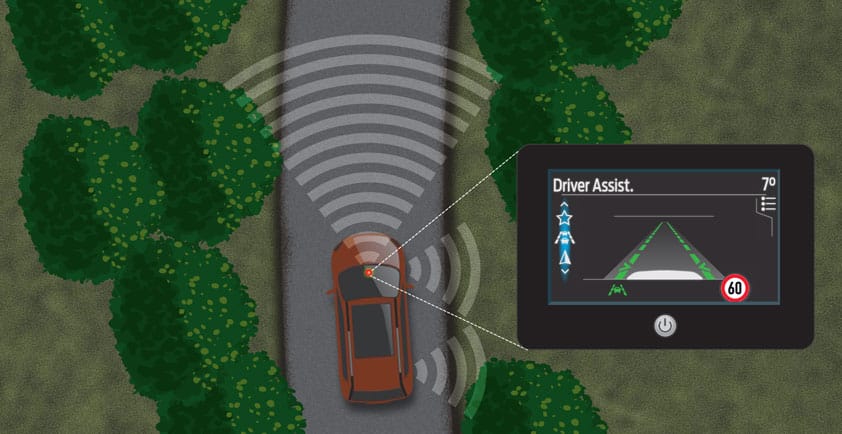

FORD TO CREATE CAMPUS OF THE FUTURE IN DEARBORN TO SPEED PRODUCT INNOVATION AND ATTRACT WORLD-CLASS TALENT
>> Ford details an expanded vision to transform its Research & Engineering Center in Dearborn; initial construction slated to be complete by the end of 2022
>> Master plan envisions a walkable campus of interconnected buildings that could one day house more than 20,000 employees in a flexible, high-tech environment showcasing new mobility solutions such as electrified bikes, scooters and shuttles
>> Design principles align with Ford’s increasingly human-centered approach to creating new products and services
DEARBORN, Mich. – Ford Motor Company today detailed an expanded vision to transform its Research & Engineering Center in Dearborn into a high-tech, efficient, forward-thinking campus for thousands of its designers, engineers and product development workers.
The focal point will be a new central campus building which sits on the site of Ford’s 66-year-old Product Development Center, located on the northwest corner of today’s Research & Engineering Center. Future home to Ford’s product development community, initial construction of the new building will be complete by the end of 2022. Paired with the restoration of Michigan Central Station in Detroit’s Corktown neighborhood into a collaborative space to create future mobility solutions, the new facility will help Ford speed product and technology innovation and attract world-class talent.
Sitting along Oakwood Boulevard, close to downtown west Dearborn and The Henry Ford Museum, the central campus building will be finished in 2025 and co-locate more than 6,000 Ford employees – mainly designers and vehicle development teams – creating an inviting, walkable community entrance to the company’s Research & Engineering campus. Ultimately, the master plan envisions a campus of interconnected buildings that could one day house more than 20,000 employees in a flexible, high-tech environment.
“From the Rouge to Highland Park in Detroit to Dagenham in the U.K., Ford has leveraged innovative workspaces and facilities to inspire our teams to invent the future,” said Ford President and CEO Jim Hackett. “Our vision for our Dearborn Research & Engineering campus – and our new Corktown campus and Ann Arbor robotics lab – will enable Ford to lead the next era of transportation and personal mobility, and help us continue our founding mission of driving human progress through the freedom of movement.”
The new master plan framework is the result of a two-year research and planning process led by Snøhetta as lead architect, landscape architect and master planner. The plan is based on three core principles – integration, interaction and co-location – to advance Ford’s vision to serve customers through a winning portfolio, new propulsion choices, autonomous technology and mobility services.
Transformation through design
In the last decade, connectivity, automation, electrification and other technologies have dramatically shifted the automotive and mobility landscape. The design principles of the master plan go hand in hand with Ford’s evolving approach to product design and development. Ford increasingly is leveraging human-centered design and cross-functional teams to create new products and services and manage product lines as customer-focused end-to-end businesses.
“We are building workspaces of the future in Dearborn and globally that will bring all of our people, with their incredible talent and energy, together in one place,” said Ford Land Chairman and CEO David Dubensky. “Having all employees in state-of-the-art interconnected buildings will facilitate a better flow of ideas and catalyze opportunities for collaboration and knowledge sharing – driving efficient product innovation.”
The new master plan also transforms community engagement as the Research & Engineering Center moves closer to Oakwood Boulevard to be more open and connected to the surrounding neighborhoods. Plans include an increase in public spaces and shared pathways that bring employees and local residents together, as well as coffee shops and restaurants that can serve as meeting places and communal spaces.


The plan envisions an intelligent campus built with flexibility so it can adapt to changes in the industry and work practices. With more freedom to decide where and how they want to work, employees can take advantage of adaptable furniture and flexible workspaces outfitted with the latest productivity tools and technology.
Movement within the campus will be pedestrian-focused and transit-rich, connected directly to amenities and networked through a shared transportation loop, limiting personal vehicle access to the perimeter of the site. The campus will showcase new mobility solutions such as electrified bikes, scooters and shuttles, evolving over time as autonomous vehicles and other transportation emerges.
The design of the architecture and landscapes promotes natural light, high ceilings and views of nature, keeping employee health and well-being at the core of the new campus. Amenities will include cafés and restaurants that prioritize sustainable, local products and farm-to-table food sourcing. There will be connected outdoor environments people can use across all seasons, such as pavilions, courtyards and covered walkways.
These broad moves in turn intensify the tree density and wetland landscape across the remainder of the site. Where possible, natural environments will be restored to keep the needs of people, vegetation and wildlife in balance.
“We envision a quilt of interconnected buildings, with Ford teams woven together in such a way that enables collaboration and innovation in its transformed workspace,” said Craig Dykers, co-founder of Snøhetta. “Natural and built environments, employees and communities, moving in one Ford ecosystem, and connected with the world around it.”
Center of automotive innovation for 66 years
Ford has a long history of creating transformative workspaces that has enabled it to build world-class products and services and develop groundbreaking new technologies – from the Highland Park Plant that delivered the assembly line to the 101-year-old Rouge Complex, which became the largest and most admired integrated factory in the world.
A vision ahead of its time, the 1946 master plan for the Ford Research & Engineering Center outlined the company’s first campus solely dedicated to research and product development and laid the groundwork for Ford’s global expansion and best-selling product lineup. Dedicated by U.S. President Eisenhower in May 1953, it is currently home to 11,000 engineers and designers. The Henry Ford II World Headquarters building followed in 1956, located along Michigan Avenue within close proximity to Research & Engineering and the Rouge Complex, providing the birthplace of many modern management standards.
Over the next half-century, Ford’s Dearborn facilities would continue to expand along with the company’s growth and product offerings. While the expertise of its employees became increasingly specialized, the company’s teams settled into focused, yet dispersed, workspaces throughout Dearborn.
“We are creating centers of excellence globally where talent can thrive,” said Dubensky. “These will be inviting places for our employees, partners, businesses and entrepreneurs from around the world to come and work with us to create tomorrow together.”
The new central building of the revamped Dearborn Research & Engineering campus is the latest step in Ford’s commitment to reinvigorate southeastern Michigan as a global hub of innovation for transportation. The Dearborn campus creates a mobility corridor on Michigan Avenue, spanning east to Detroit with Ford’s redevelopment of Michigan Central Station and other nearby properties, and west to Ann Arbor, where the company’s robotics research lab at the University of Michigan is located.














